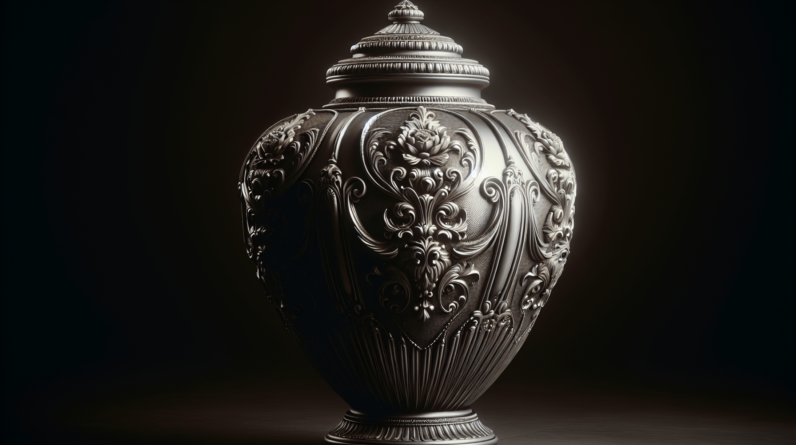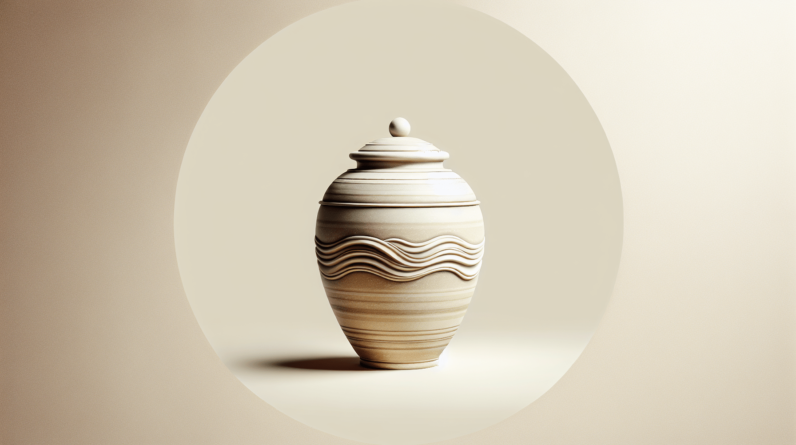
Have you ever wondered what happens to the ashes after cremation? It’s a question that many people have, and rightfully so. After all, knowing the final resting place of a loved one’s remains can bring a sense of closure and peace. According to my research, after the process of cremation is complete, the ashes, also known as cremains, are usually collected and placed in an urn or another container. From there, families have several options for what to do with the ashes, such as keeping them at home, scattering them in a meaningful location, or even incorporating them into a piece of jewelry. The possibilities are vast, and the decision ultimately lies with the wishes and preferences of the deceased and their loved ones.
Ashes: Definition and Composition
The definition of ashes
Ashes, in the context of cremation, refer to the remains of a person or a pet that have been reduced to a fine, powdery substance after the cremation process. These ashes are also commonly known as cremains. They hold a significant emotional and symbolic value to many individuals as they represent the physical remnants of a loved one who has passed away.
The composition of ashes
Ashes consist primarily of inorganic matter and minerals, such as calcium, phosphorus, and potassium. These components are derived from the skeletal structure of the deceased and remain intact even after the cremation process. Additionally, the ashes may contain trace amounts of metals, such as titanium or stainless steel, which may be present due to medical implants that were not fully incinerated during the process.
Cremation Process
Explanation of the cremation process
Cremation is a carefully controlled and respectful method of final disposition that involves exposing the deceased to intense heat and flame. The process takes place in a specially designed furnace called a cremator, which is able to reach temperatures of up to 1800 degrees Fahrenheit (982 degrees Celsius). The body is placed in a sturdy container, often made of wood or cardboard, before being placed inside the cremator.
Once the cremation process begins, the intense heat vaporizes the body and reduces it to bone fragments, which are then further processed to create the ashes. The entire process generally takes around two to three hours depending on various factors such as the size and weight of the deceased.
Temperature and duration of cremation
As mentioned earlier, the cremation process involves exposing the deceased to temperatures of up to 1800 degrees Fahrenheit (982 degrees Celsius). These high temperatures are necessary to ensure complete combustion of the body and the transformation of the remains into ashes. The duration of the process can vary depending on factors such as the type of cremator used, the size of the deceased, and the specific protocol followed by the crematorium.
The role of the furnace in the process
The furnace, or cremator, plays a vital role in the cremation process. It is specially designed to generate and maintain the high temperatures required to break down the deceased’s body into bone fragments and ultimately ashes. The furnace is insulated to prevent heat from escaping and is equipped with an advanced ventilation system to remove any odors and emissions produced during the process.
The furnace also ensures the safe and controlled release of gases generated during the incineration process. These gases are directed through an exhaust system where they undergo further purification to minimize any potential environmental impact. Crematoriums adhere to strict regulations and safety protocols to ensure the entire process is executed with utmost care and respect.
Collection of Ashes
How the ashes are collected
After the cremation process is complete, the bone fragments are carefully removed from the furnace. These fragments are then processed to create a fine, powdery substance, which is what we commonly refer to as ashes. The collection of ashes is a delicate and precise task carried out by trained professionals at the crematorium.
Tools and techniques used
In order to collect the bone fragments and transform them into ashes, specialized tools and techniques are employed. The fragments are typically processed in a machine called a cremulator, which uses grinding and crushing motions to pulverize the bones into a fine powder. This fine powder is then carefully collected in a container, ensuring that it is handled with the utmost care and respect throughout the entire process.
The importance of proper identification
Proper identification is of paramount importance throughout the entire cremation process, especially during the collection of ashes. Crematoriums have strict protocols in place to ensure that the remains are accurately identified and that there is no confusion or mix-up between different individuals. This includes the use of unique identification tags and detailed documentation to track the entire process from the moment the deceased is received until the ashes are returned to the family.
Maintaining accurate identification not only provides peace of mind to the family but also ensures that the final product, the ashes, are indeed those of their loved one. Crematoriums take great care to respectfully handle and process the remains, understanding the emotional significance these ashes hold for the grieving family.
Ashes: Final Product
The appearance of ashes after cremation
After the collection process is complete, the ashes take on a light gray to white color, resembling fine sand or powder. They have a smooth and grainy texture, much like soft sand. The overall appearance of the ashes may vary slightly depending on factors such as the specific methods used for cremation and the composition of the deceased’s bones.
Particle size and texture of ashes
The ashes produced after cremation have a particle size similar to that of coarse sand or powdered sugar. However, the exact particle size can vary depending on multiple factors, including the duration and temperature of the cremation process. Despite the variation in particle size, the texture of the ashes is typically very fine and soft, making them easily dispersible and manipulable.
Presence of any remnants
In some cases, there may be small remnants present in the ashes after the cremation process. These remnants can include bone fragments that were not completely reduced to ashes during the cremation, as well as any residual metal objects such as screws, nails, or fragments of medical implants. Crematorium staff takes great care to manually remove any visible remnants before returning the ashes to the family.
It’s important to note that remnants are considered to be a normal part of the cremation process. They do not impact the overall composition or the emotional significance of the ashes. However, if the presence of visible remnants is a concern, it is advisable to discuss this with the chosen crematorium beforehand.
Storage Options
Traditional urns
Traditionally, ashes are often placed in urns for long-term storage and memorialization. Urns come in various shapes, sizes, and materials, allowing individuals to choose one that best reflects their loved one’s personality and their own aesthetic preferences. These urns can be made from materials such as metal, ceramic, glass, wood, or even biodegradable materials for those who wish for a more environmentally friendly option.
Urns provide a secure and dignified storage option for the ashes, preserving them for future generations and creating a tangible focal point for remembrance. They can be displayed at home, placed in a columbarium, or buried in a cemetery, providing a dedicated space for honoring the departed.
Alternative containers
In addition to traditional urns, there are an array of alternative containers available for storing ashes. These containers include keepsake jewelry, small decorative boxes, or even custom-made artworks. These options allow for a more personalized and creative approach to ash storage, providing individuals with the opportunity to honor their loved one in a unique and meaningful way.
Additionally, some individuals may choose to divide the ashes into multiple containers, allowing family members or friends to each have a portion to keep in their own chosen container. This option can provide a sense of shared remembrance and connection among loved ones.
Creating memorial jewelry
A popular and increasingly common option for storing ashes is to incorporate them into memorial jewelry. This can include pendants, rings, bracelets, or even keychains that contain a small compartment for holding a portion of the ashes. These personalized pieces of jewelry offer individuals a tangible connection to their loved one, allowing them to carry a part of them wherever they go.
Memorial jewelry can be crafted from a variety of materials, including silver, gold, or even glass, with designs ranging from simple and elegant to more intricate and personalized. By transforming the ashes into wearable pieces, memorial jewelry serves as a constant reminder of the lasting impact and presence of the departed.
Ash Scattering
Traditional ash scattering methods
Scattering ashes is a deeply personal and symbolic act that allows for a connection between the deceased and the natural world. Traditional ash scattering methods often involve dispersing the ashes over meaningful locations such as oceans, rivers, mountains, or gardens. This act serves as a final farewell and a way to return the deceased’s remains to nature.
Hand scattering is the most common method, where the ashes are gently released from the individual’s hand and allowed to be carried by the wind or water. Alternatively, the ashes can be scattered from a biodegradable urn, which will eventually dissolve and release the ashes into the chosen location.
Legal considerations and regulations
Before scattering ashes in public or private locations, it is important to consider and comply with any legal considerations and regulations in place. These regulations may vary depending on the location and jurisdiction, so it is essential to research and understand the specific requirements.
In some cases, obtaining permission from the landowner or local authorities may be necessary. It is also worth considering the environmental impact of ash scattering to ensure that it is done in a way that is respectful to the surroundings and does not cause harm to the environment or wildlife.
Alternative ash scattering options
For those who wish to commemorate their loved one’s life in a more unique and personalized manner, there are alternative ash scattering options available. These options include aerial scattering, where the ashes are released from an aircraft, or even incorporating the ashes into environmentally friendly fireworks that can be set off during a memorial ceremony.
These alternative options can provide a memorable and impactful way to say goodbye to a loved one, allowing for a customized and personalized tribute that reflects their individuality and passions in life.
Other Disposition Methods
Ash burial
Ash burial, also known as interment or inurnment, involves the burial of the ashes in a designated plot or grave. This method provides a physical resting place for the ashes, similar to a traditional burial. Ashes can be buried in cemeteries, memorial gardens, or designated areas specifically created for ash burial.
The burial plot can be marked with a headstone or marker, allowing for a dedicated space to visit and memorialize the departed. Ash burial provides the opportunity for a traditional and permanent memorial, ensuring the presence of a physical location that can be visited by family and friends.
Placement in a columbarium
A columbarium is a structure or room specifically designed for the permanent storage of urns containing ashes. It provides a dedicated and secure space for cremated remains, often within a cemetery or a memorial site. Columbariums can consist of niches, which are small compartments to hold the urns, or they can be larger structures with shelves or columns to accommodate a larger number of urns.
Placement in a columbarium allows for a respectful and centralized location for the ashes to be stored, providing family and friends with a designated space for remembrance and reflection. Many columbariums offer options for personalization, such as engraved plaques or photographs, to further honor and remember the departed.
Creating a memorial reef
An alternative and environmentally conscious method of disposition is the creation of a memorial reef. This option involves incorporating the ashes into a custom-made artificial reef structure, which is then placed in an underwater location. These artificial reefs provide a habitat for marine life, while at the same time serving as a lasting memorial for the departed.
Creating a memorial reef allows individuals to honor their loved ones in a unique and meaningful way, while also contributing to the preservation and conservation of marine ecosystems. These underwater memorials can be visited by family and friends, offering a tranquil and natural setting for reflection and remembrance.
Cremated Ashes and Religion
Different religious beliefs and practices
Different religious beliefs and practices influence the handling and disposition of cremated ashes. While some religions, such as Hinduism and Buddhism, have long-standing traditions of cremation, others, like Christianity or Islam, may have varying perspectives on the practice.
It is always important to consult and respect the religious teachings and guidance of one’s own faith or the faith of the deceased when making decisions regarding the handling and final disposition of cremated ashes. Religious leaders and advisors can provide valuable insight and advice specific to their religious traditions.
Traditional rituals involving ashes
Many religions have traditional rituals and ceremonies that involve the handling and use of ashes. These rituals often serve to honor and remember the deceased, provide closure for family and friends, and symbolize the transition of the soul into the afterlife.
For example, in Hinduism, the ashes may be submerged in holy rivers such as the Ganges as part of a sacred ritual known as Asthi Visarjan. In Buddhism, ashes may be placed within special relics or enshrined in stupas, which are dome-shaped structures representing the enlightened mind.
Contemporary views and adaptations
In contemporary society, there is a wide range of views and adaptations when it comes to the handling of cremated ashes within religious contexts. Some individuals may choose to follow the traditional practices of their religion, while others may incorporate modern elements or personalized rituals into the process.
Many religious institutions today are more accommodating and understanding of individual preferences and circumstances surrounding the handling of ashes. They are often willing to work with families to find a solution that aligns with both religious beliefs and personal desires, ensuring that the final disposition is respectful and in accordance with the deceased’s faith.
Memorialization and Remembrance
Importance of memorialization
Memorialization serves as a way to honor and remember the departed, creating lasting tributes that help keep their memory alive. It offers solace and comfort to grieving family and friends, providing a tangible connection to the deceased and a space for collective remembrance.
By creating meaningful memorials, individuals can actively participate in the grieving process, finding healing and support through the act of memorialization. It allows for the celebration of a life lived and acts as a way to preserve the legacy and impact of the departed for future generations.
Options for creating lasting memorials
There are numerous options available for creating lasting memorials that go beyond the storage or disposition of ashes. Memorialization can take various forms, such as the creation of memorial gardens or dedicating a bench or plaque in honor of the departed. It can also involve the establishment of scholarships, charitable foundations, or the ongoing support of causes that were important to the deceased.
Additionally, advancements in technology have introduced digital memorials, allowing for the creation of online tributes, virtual memorials, or interactive platforms that provide a space for sharing memories and connecting with others who have also been impacted by the life of the departed. These digital memorials ensure that the memory and legacy of the deceased can be preserved and accessed by individuals around the world.
Grief support and counseling
Throughout the grieving process, it is important to acknowledge and seek support from professionals or support groups specializing in grief counseling. Grief support and counseling offer individuals the opportunity to express their emotions, navigate the complexities of loss, and receive guidance in understanding their personal journey of healing.
Support groups provide a network of individuals who have shared experiences and can offer understanding and empathy. These groups help individuals realize they are not alone in their grief and can provide a safe space for sharing memories and finding solace.
Conclusion
Reflecting on the significance of ashes brings an appreciation for the multi-faceted aspects involved in their creation, collection, and subsequent disposition. By understanding the cremation process, the composition of ashes, and the options available for handling them, individuals can make informed choices that align with their personal preferences and the beliefs of their loved ones.
When faced with end-of-life decisions and the emotions that accompany them, it is crucial to approach the subject with the utmost care and compassion. By considering the various options for storage, scattering, and memorialization, individuals can create a meaningful and lasting tribute that honors the life and legacy of their departed loved ones.
Preparing for end-of-life decisions, including the handling of ashes, is an act of love and consideration for those you leave behind. By openly discussing and planning for these decisions, you can alleviate the burden on your loved ones during a time of profound grief and ensure that your wishes are respected. Remember that everyone’s journey is unique, and there is no right or wrong way to navigate these decisions. Trust in your feelings and intuition as you make choices that best reflect your individual beliefs, values, and desires.






